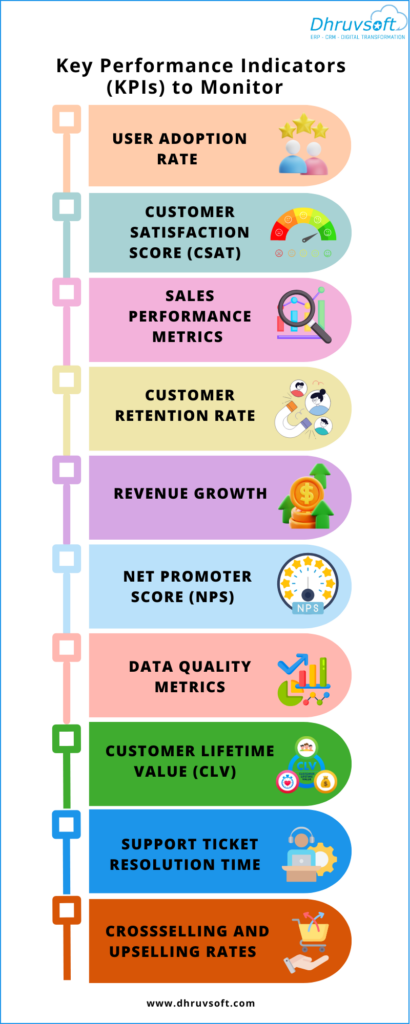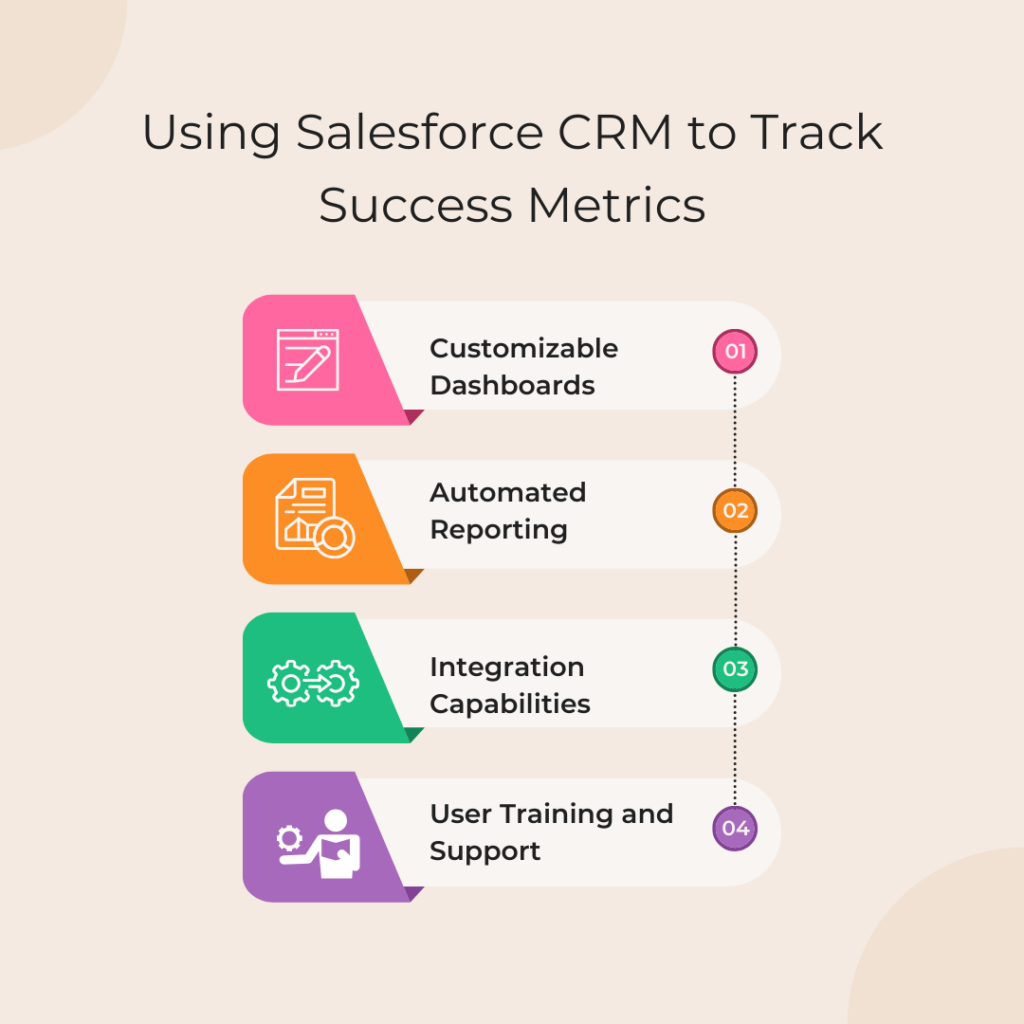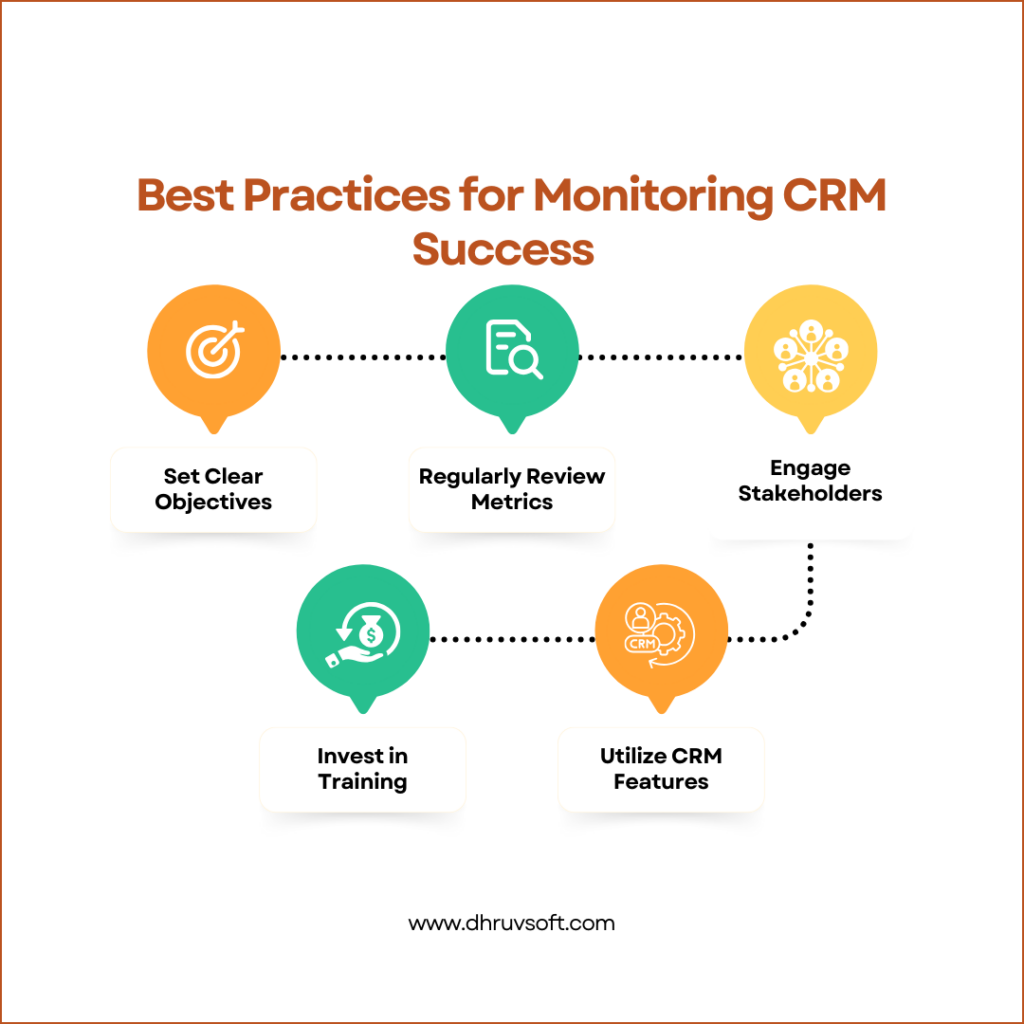Implementing a Customer Relationship Management (CRM) system is a key step for businesses aiming to enhance customer relationships, streamline business processes, improve customer satisfaction, and drive revenue growth. However, the true value of a CRM system only becomes apparent when its effectiveness is measured. For Chief Information Officers (CIOs) and IT Heads, understanding key performance indicators (KPIs) and metrics is essential for evaluating the success of their CRM implementation, particularly if they are using widely adopted platforms like Salesforce CRM.
In this article, we will deep dive into the KPIs that can help gauge CRM effectiveness, providing insights into how to measure them and why they are important. By focusing on these metrics, organizations can make informed decisions, optimize their CRM usage, and ultimately achieve better customer engagement and satisfaction.

Understanding CRM Success
Before diving into specific KPIs, it’s crucial to define what success means in the context of CRM implementation. Success can be formed by several aspects, including:
- Improved Customer Satisfaction: Higher customer satisfaction levels lead to increased customer loyalty and repeat business from them.
- Increased Sales Efficiency: Effective CRM systems streamline sales processes, allowing teams to close deals faster.
- Enhanced Data Management: A successful CRM should improve data quality, making it easier to analyze and derive insights.
- Greater Collaboration: Improved internal communication and teamwork can result from a well-implemented CRM.
By establishing clear objectives, organizations can align their CRM goals with these success factors and focus on the relevant KPIs.
Key Performance Indicators (KPIs) to Monitor
Here are some essential KPIs that CIOs and IT Heads should monitor to evaluate the success of their CRM system:
1. User Adoption Rate
Definition: The percentage of employees actively using the CRM system compared to the total number of users.
Why It Matters: High user adoption rates indicate that the CRM system is being utilized effectively. Low adoption can signal usability issues or a lack of training, which may hinder the system’s success.
How to Measure: Track the number of active users over time and compare it to the total number of licensed users. You can use Salesforce’s reporting tools to generate user adoption reports.
2. Customer Satisfaction Score (CSAT)
Definition: A metric that measures customer satisfaction through feedback surveys.
Why It Matters: Satisfied customers are more likely to return and refer others. A well-implemented CRM can significantly enhance the customer experience.
How to Measure: After customer interactions, send surveys asking customers to rate their experience on a scale (e.g., 15). Calculate the average score to determine overall satisfaction. You can use the Salesforce Survey feature to conduct customer surveys.
3. Sales Performance Metrics
Lead Conversion Rate:
Definition: The percentage of leads that turn into paying customers.
Why It Matters: A higher conversion rate indicates that sales processes are effective and the CRM is providing valuable insights.
How to Measure: Divide the number of converted leads (closed business) by the total number of leads generated and multiply by 100. Salesforce provides tools to track lead conversion through its sales pipeline functionality.
Sales Cycle Length:
Definition: The average time it takes to convert a lead into a sale.
Why It Matters: A shorter sales cycle suggests that CRM has helped sales teams close deals more efficiently. You can compare these metrics with the pre-CRM era in your organization and compare.
How to Measure: Track the time from initial contact with a lead or getting an inquiry to closing the sale. CRMs like Salesforce can help you not only measure the complete Sales Cycle but also how much time the deal was in each of the sales stages.
4. Customer Retention Rate
Definition: The percentage of customers who continue to do business with you over a period.
Why It Matters: Retaining existing customers is often more cost-effective than acquiring new ones as the acquisition cost is much higher. A CRM should support relationship building that fosters customer loyalty.
How to Measure: Subtract the number of customers who lost during a period from the total number of customers you had at the start of that period. Then, divide the result by the initial number of customers and multiply by 100.
5. Revenue Growth
Definition: The increase in revenue over a specific time frame.
Why It Matters: A well-implemented CRM should contribute to revenue growth by improving sales processes and customer interactions.
How to Measure: Calculate the percentage increase in revenue from one period to another, particularly noting sales that can be directly attributed to CRM efforts.
6. Net Promoter Score (NPS)
Definition: A measure of customer loyalty and likelihood to recommend your business to others.
Why It Matters: A higher NPS indicates strong customer relationships, which is a primary goal of any CRM implementation.
How to Measure: Conduct surveys asking customers to rate their likelihood of recommending your product on a scale of 0 to 10. Calculate the percentage of promoters (scores 9 to 10), Passives (scores 7 to 8), and detractors (scores 0 to 6) to derive the NPS.
7. Data Quality Metrics
Definition: Assessing the accuracy, completeness, and consistency of the data within the CRM.
Why It Matters: High-quality customer-related data is essential for informed decision-making. Poor data quality can lead to misguided strategies and wasted resources.
How to Measure: Regularly audit CRM data for inaccuracies and completeness. Metrics to monitor include:
- Percentage of duplicate records
- Percentage of incomplete records
- Frequency of data updates
8. Customer Lifetime Value (CLV)
Definition: The total revenue generated from a single customer account throughout their relationship with the business.
Why It Matters: Understanding CLV helps in determining how much to invest in acquiring new customers and retaining existing ones.
How to Measure: Use the below formula-
- CLV = Average Purchase Value × Number of Transactions × Average Customer Lifespan
9. Support Ticket Resolution Time
Definition: The average time taken to resolve customer support tickets.
Why It Matters: Quick resolution times improve customer satisfaction and demonstrate the efficiency of your CRM system in managing customer interactions.
How to Measure: Track the time from ticket creation to resolution and calculate the average over a defined period. Salesforce Service Cloud can help streamline ticket management and reporting.
10. CrossSelling and Upselling Rates
Definition: The rates at which existing customers purchase additional products or services.
Why It Matters: A successful CRM should enable sales teams to identify opportunities for cross-selling and upselling based on customer data and preferences.
How to Measure: Track the percentage of existing customers who purchase additional products or services over a specific period.
Utilizing Salesforce CRM for Monitoring Success Metrics
Salesforce CRM offers a variety of features that can facilitate the tracking of these KPIs:
- Customizable Dashboards: Salesforce allows users to create tailored dashboards that display real-time data on critical KPIs, helping teams stay informed and make quick decisions.
- Automated Reporting: With Salesforce, users can automate reporting processes, making it easier to track and analyze key metrics without extensive manual effort.
- Integration Capabilities: Salesforce can integrate with various business tools, allowing organizations to consolidate data and gain a comprehensive view of customer interactions and business performance.
- User Training and Support: Salesforce provides extensive training resources and customer support to help users maximize the system’s potential.
Best Practices for Monitoring CRM Success
To ensure effective monitoring of CRM success, consider implementing these best practices:
- Set Clear Objectives: Before measuring KPIs, define what success looks like for your organization. You have to establish specific, measurable goals that are aligned with your overall business objectives.
- Regularly Review Metrics: Make it a practice to review KPIs on a regular basis—monthly, quarterly, or annually—depending on your business needs. This helps in identifying trends and making necessary adjustments.
- Engage Stakeholders: Involve key stakeholders, including sales, marketing, and customer service teams, in discussions about CRM metrics. Their insights can provide valuable context and inform decisions.
- Invest in Training: Continuous training for employees can enhance CRM adoption rates and data quality, leading to better measurement outcomes.
- Utilize CRM Features: Leverage Salesforce’s reporting and dashboard capabilities to visualize KPIs, making it easier to communicate results across the organization.
Conclusion
Measuring the success of your CRM implementation is crucial for understanding its impact on your organization and driving future improvements. By monitoring KPIs such as user adoption, customer satisfaction, and sales performance, CIOs and IT Heads can gain valuable insights into the effectiveness of their CRM system.
Utilizing tools within Salesforce CRM simplifies this process, offering comprehensive reporting features that enhance decision-making. By focusing on these metrics, organizations can optimize their CRM usage, foster better customer relationships, and achieve long-term success.
By focusing on these KPIs and following best practices for measurement, organizations can ensure that their CRM investment delivers significant returns and contributes to their overall business success. Ready to unlock the full potential of your CRM system? Our team of experts is here to help you measure, optimize, and maximize your CRM’s performance. Get in touch today to ensure your CRM delivers the results you need for long-term success!


